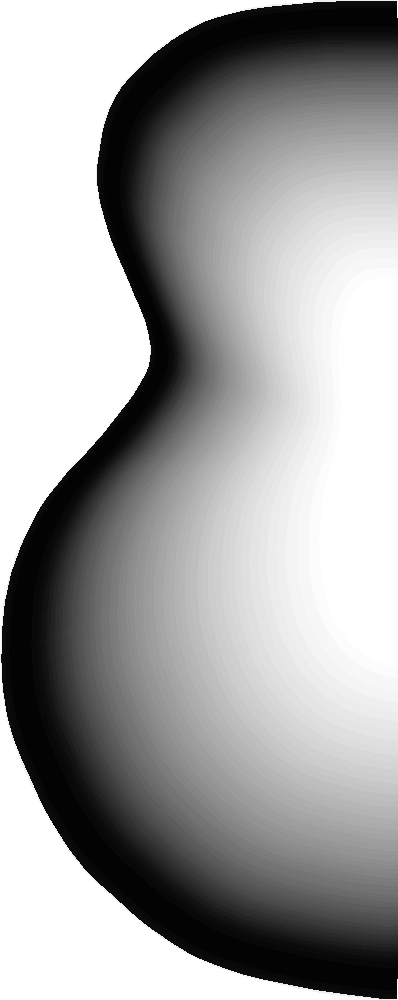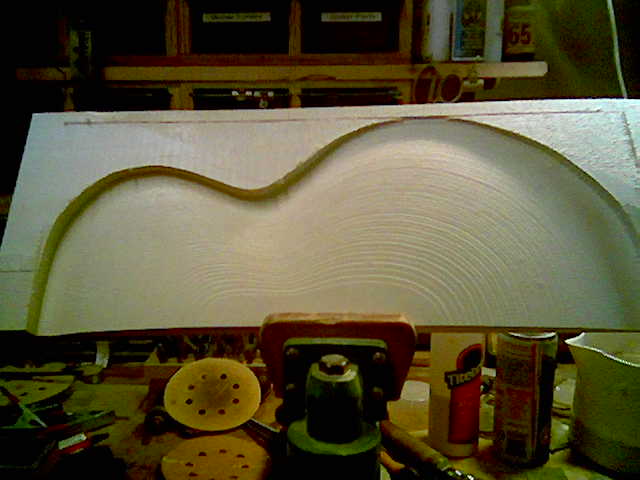For the last 16 years I've been re-writing for Windows a vector drawing program that I originally wrote for the Amiga (called ArtExpression). One of the features is a "blend" function that blends shapes, fill colors, line colors, etc. Using this blend function I have been creating contour maps for carving archtop guitar tops and backs (actually only half at one time because of the limited width of the machine).
My question is, is the depth of the cut based on values between 0 (Black) and 255 (white), or based on the RGB value of the color. If the latter, this could result in 768 sort-of gray levels rather than just 256. Like (128, 128, 12would be a medium gray and (129, 128, 12
would be slightly "redder" and lighter, (129, 129, 12
again lighter, etc.
I'm trying to eliminate or reduce the "stair stepping" in the illustrations below:
This carving was based on this bmp file imported into designer:





 Reply With Quote
Reply With Quote



